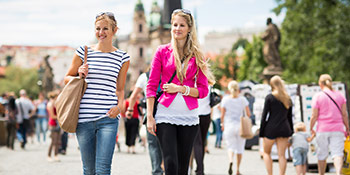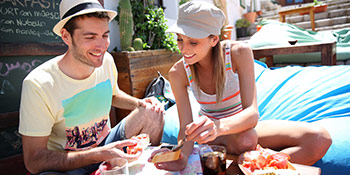Phone: + 39 0541 798670 E-mail: office@bistravel.it
Lombardy, Italy
Lombardy, ITALIAN REGIONS-
 View Largebtravel_lombardy_1
View Largebtravel_lombardy_1 -
 View Largebtravel_lombardy_2
View Largebtravel_lombardy_2 -
 View Largebtravel_lombardy_3
View Largebtravel_lombardy_3 -
 View Largebtravel_lombardy_4
View Largebtravel_lombardy_4 -
 View Largebtravel_lombardy_5
View Largebtravel_lombardy_5 -
 View Largebtravel_lombardy_6
View Largebtravel_lombardy_6 -
 View Largebtravel_lombardy_7
View Largebtravel_lombardy_7 -
 View Largebtravel_lombardy_8
View Largebtravel_lombardy_8
One of Italy’s largest regions, Lombardy lies in the north of the country, sharing a border with Switzerland.
Stretching from the Alps to the lowlands of the Po Valley, it is home to a wide range of landscapes, including the breathtaking mountain chain that boasts the Valchiavenna, Valtellina and the Camonica Valley.
Winter sports enthusiasts will find no lack of state-of-the-art facilities in Lombardy, for example in the extremely popular resorts of Tonale, Bormio, Livigno and Madesimo.
Another aspect that defines the region is its expanse of rolling hills that encompass the distinctive Franciacorta area, famous for its vineyards and wine production. The charm of the great lakes is a great tourist draw, attracting visitors to Sirmione and other well known destinations dotting the western coast of Lake Garda, while Lake Como and Lake Maggiore are no less beautiful, surrounded as they are by stately homes, parks and picturesque small towns.
The region is also characterized by the great flat tracts of the Po Valley lowlands, covered by shimmering mirrors of water and rice paddies: this is the typical landscape of Lomellina, the land of rice harvesters, steeped in tradition.
The region has countless other distinctive facets. Lombardy, aided by its geographic position and fertile soil, will captivate you – nature, history, art and culture marry in harmony with innovation, technology, fashion, entertainment, and a contemporary outlook.
The region comprises the provinces of Bergamo, Brescia, Como, Cremona, Lecco, Lodi, Mantua, Milan (regional capital), Monza and Brianza, Pavia, Sondrio and Varese.

The region has much to offer in terms of its natural, cultural and architectural perspective. There are the UNESCO World Heritage Sites at Mantua, once ruled by the powerful Gonzaga family, and Sabbioneta, the defining “ideal city” of the Italian Renaissance; the Sacred Mountains, a devotional route in the Varese and Ossuccio area; the prehistoric rock paintings (petroglyphs) of the Camonica Valley; the Rhaetian Railway that makes its way through the mountainous landscapes of Albula and Bernina; the 19th-Century industrial settlement of Crespi d’Adda and, finally, Milan, with the Church of Santa Maria delle Grazie that contains the Last Supper, the celebrated Leonardo Da Vinci fresco.
Still in Milan, a major architectural masterpiece is the renowned Teatro alla Scala. The imposing Duomo (Cathedral) is absolutely extraordinary, constructed in white marble and dedicated to the Birth of the Virgin Mary.
As for Monza, make sure to visit the Autodromo, the state-of-the-art motor racing track, and the Villa Reale, a former royal residence. Then there is the Cathedral, where the ancient Iron Crown is kept, reputedly concealing a nail from the True Cross.
In Brescia, of particular interest is the Saint Salvatore Monastery, while the craft and tradition of violin-making, most famously seen in the work of Stradivarius, lives on in Cremona.
Pavia is the “City of 100 Towers,” the Visconti Castle, and a renowned University. Meanwhile, Varese is known as the “Garden Province,” and Sondrio hosts the stupendous Masegra Castle, which owes its charm to its fusion of diverse epochs and styles.
Lecco’s fame can be attributed to I Promessi Sposi, a masterpiece of a novel by Italian author Alessandro Manzoni, who opened the book with the image of the splendid branch of Lake Como where the city stands.
Bergamo, rather, is the site of the Accademia Carrara, one of the largest Italian painting galleries; the Colleoni Chapel and the Teatro Donizetti, dedicated to Bergamo’s most illustrious citizen and composer.
The Medieval city of Lodi is characterized by the porticoes in Piazza della Vittoria, decorated by the Duomo and the Palazzo Comunale.
Finally, Como, on the extreme western arm of the lake, is known for its gorgeous villas, e.g. Villa Olmo, an imposing Neoclassical structure.

The mountains, the plains and grand lakes of Lombardy form the perfect backdrop for a vacation filled with nature, athletics, rest and routes for discovering the territory.
The mountain peaks welcome ski and snowboard enthusiasts to internationally-famous ski destinations, like the Camonica Valley and Valtellina, with their popular resorts of Livigno, Bormio, Aprica and hundreds of kilometers of slopes to match every ability level.
In summertime, the mountains offer the excitement of scaling the Adamello and other ranges, as well as possibilities for rafting, trekking and mountain biking, while the Stelvio Glacier offers skiers the challenge and adventure of its slopes, even in the warmest months.
The mountains of Lombardy are also a good place for a relaxing holiday, thanks to the various spas rich in therapeutic thermal waters – for example the Boario and Bormio Spas, surrounded by a beautiful park.
Lake Garda, just like Lakes Como and Iseo, ensures a restful and entertaining holiday, with the chance to sail, windsurf, water ski, canoe, cycle, trek, boat and take excursions to the surrounding areas.
Tourists can choose from countless itineraries that will allow them to discover Lombardy’s most distinctive and unique features.
The Sacred Mountains (also a UNESCO World Heritage Site) offer exceptional spiritual and natural trails. In Valchiavenna one can discover the traditions of a land that was the meeting point between Italy and Northern Europe for centuries. The nature reserves around the Navigli Canals reveal many different and enchanting landscapes, from the hills of Brianza to the green banks of the River Adda.
Gourmands can follow any, or indeed all, the Wine Trails, from Valtellina to the Lodi area, as well as to the Pavia Oltrepò or to around Mantua, and ending in Franciacorta, famed all over the world for its sparkling wines.
This is a unique journey through the vineyard-covered terraces and hills, stopping off at wineries and local producers to imbibe their delicious wines and taste the well-known local specialties.

Lombardy’s food specialties range from delicious saffron risotto and the breadcrumbed cutlet cotoletta alla Milanese, to the consommé of Pavia with its egg accompaniment and a pork and cabbage cassoulet.
Valtellina’s contributions to Lombardy gastronomy include pizzoccheri (a buckwheat version of tagliatelle), bresaola (air-dried salt beef), cured salame of Varzi and finally, fresh water fish, especially the dried and grilled lake whitefish.
Among the region’s most celebrated and delicious cheeses are Gorgonzola, from the town of the same name; Mascarpone; the unpasteurised Lodigiano; parmesan-style Grana; Robiola soft cheese; and Bel Paese.
Milan’s panettone and other Christmas sweets are renowned worldwide, as are the almond-flavoured Amaretto liqueur from Saronno, Mantua’s sbrisolona (crumb cake), and nougats from Cremona.
Lombardy’s wines go by names like Grumello, Inferno, and Sassella della Valtellina, while the wines and spumante produced in Franciacorta occupy a monumental spot in this category, particularly the Bonarda and Barbera wines of Pavia Province.

NEWSLETTER